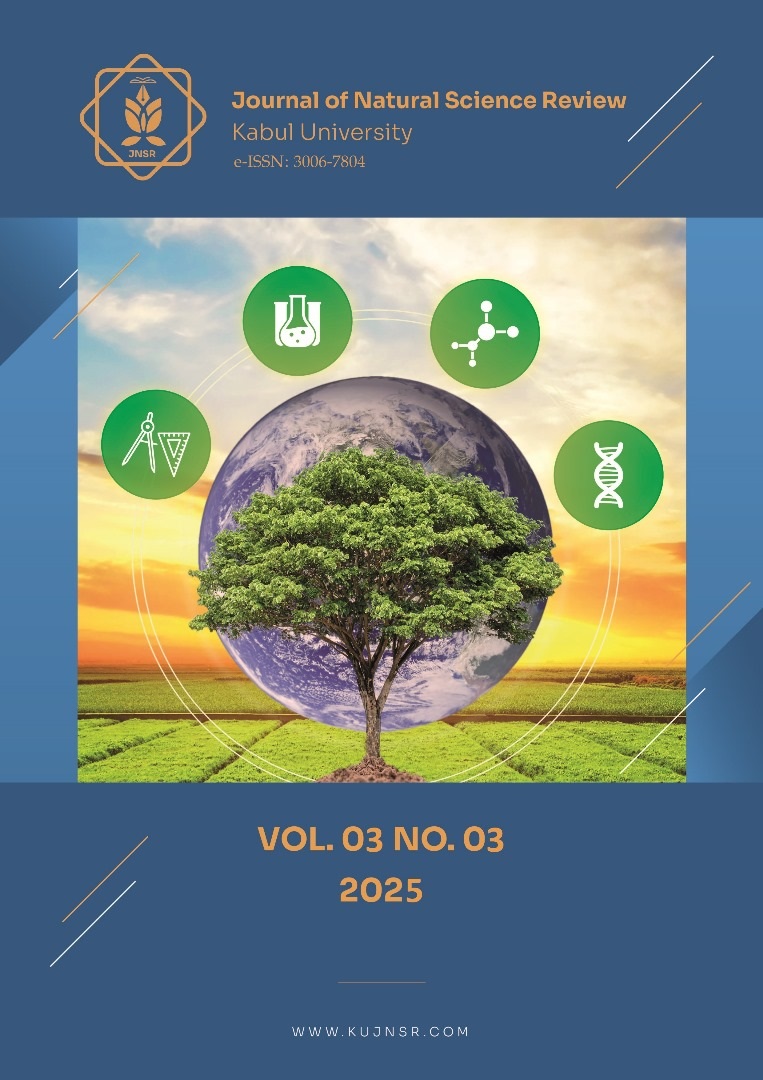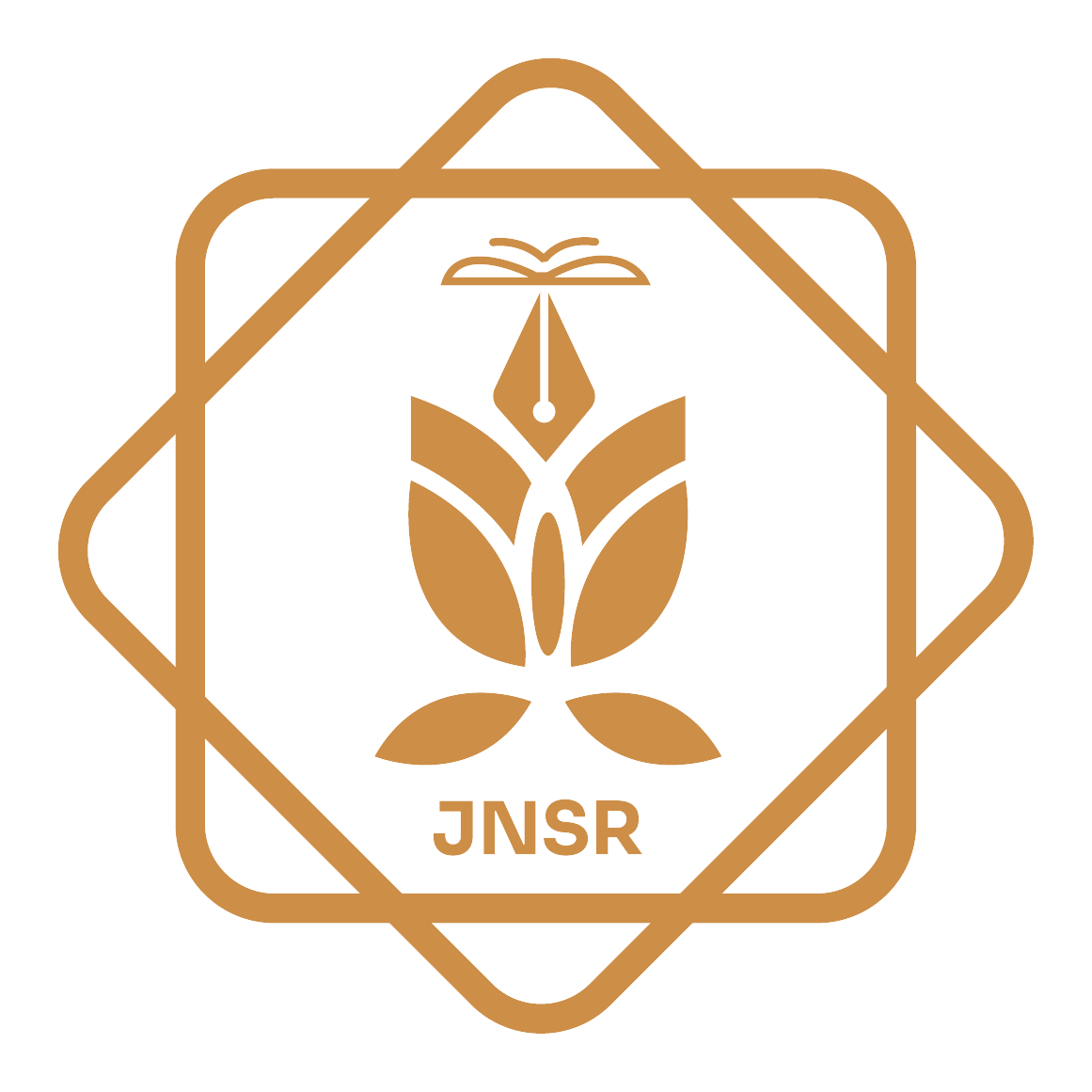Impact of Changes in Agriculture Import Tariffs on Afghanistan's Food Availability and Macroeconomic Factors
DOI:
https://doi.org/10.62810/jnsr.v3i3.267Keywords:
Keywords: CGE model; Household consumption; SAM; Labor share; capital share; Supply priceAbstract
Afghanistan grappled with a severe food insecurity crisis, with two out of every five individuals experiencing acute food insecurity. The country heavily relied on imports, with cereals accounting for 66 percent of imports and wheat accounting for 73 percent of calories. This study scrutinized the influence of changing agricultural import tariffs on macroeconomic variables and food availability. The short-term impact of agricultural import tariffs was evaluated using GAMS software, utilizing a computable general equilibrium model and a social accounting matrix. Four diverse scenarios were investigated, focusing on changes in import tariffs for various agricultural products. The findings revealed that lower tariffs resulted in augmented imports and declined domestic output, whereas the opposite trend occurred with tariff upsurges. Scenario C analysed the effect of a 50 percent change on the agricultural import tariff rate of 6.12 percent. Wheat imports increased nearly 1 percent with a decline in tariffs, while they diminished by almost 22 percent with a surge in tariffs. All agricultural categories were affected, except for opium and forestry. The study volumes, lower labor and capital sharing rates, higher supply prices, and lower domestic output. To ensure food security, the government needed to advocate for scenarios that reduced tariffs, particularly through a comprehensive liberalization policy.
Downloads
References
Adhikary, G. B., Birur, D. K., & Lal, P. (2023). Can the free trade agreements accelerate Nepal's Path towards Economic Prosperity? An Econometric and CGE Model Based Assessment. SSRN. https://doi.org/10.2139/ssrn.4203640
Aguiar, S., TexeIra, M., Garibaldi, L. A., & Jobbagy, E. G. (2020). Global changes in crop diversity: Trade rather than production enriches supply. Global Food Security, 26(8). https://doi.org/10.1016/j.gfs.2020.100385 DOI: https://doi.org/10.1016/j.gfs.2020.100385
Akbulut, H., & Egen. H. T. (2021). Import Tariffs and Informal Labour Market: A Computable General Equilibrium (CGE) Analysis for Turkey. Review of Economic Analysis, 13(2), 213-234. https://doi.org/10.15353/rea.v13i2.4046 DOI: https://doi.org/10.15353/rea.v13i2.4046
Alim, S. S., Zhiquan, H., & Yu, W. (2021). Assessment of cereal self-sufficiency and food balance projection in Afghanistan. Asian Journal of Agricultural Extension Economics & Sociology, 39(3):38-51. https://doi.org/10.9734/AJAEES/2021/v39i330544 DOI: https://doi.org/10.9734/ajaees/2021/v39i330544
Annabi, A., Cisse, F., Cockburn, J., & Decaluwe, B. (2005). Trade Liberalization, Growth and Poverty in Senegal: Dynamic MicroSimulation CGE Model Analysis (CEPII Working Paper No.2005-07, pp. 1-47). Link DOI: https://doi.org/10.2139/ssrn.721522
Arizne, S., & Odior, E. S. (2023). Implications of import tariff changes on household welfare in. International Journal of Developing and Emerging Economies, 11(1), 54-82. https://doi.org/10.37745/ijdee.13/vol11n15482
CSO. 2018. Central Statistics Organization - Islamic republic of Afghanistan. Link
Dan, C., & Claudius, P. (2010). Ethiopia's trade and investment: Policy priorities for the new government. (pp. 1-16). SSRN. https://doi.og/10.2139/ssrn.1684310
Del Villar, & Lancon, F. (2015). Food imports into Africa have been rising, and many countries. Global Food Security, 5(1), 56-61. https://doi.org/10.1016/j.gfs.2014.11.001 DOI: https://doi.org/10.1016/j.gfs.2014.11.001
Dupas, M. C., Halloy, S., & Chatzimpros, P. (2019). Time dynamics and invariant subnetwork structures in the world cereals trade network. PLOS ONE, 14(5), e0216318. https://doi.org/10.1371/journal.pone.0216318 DOI: https://doi.org/10.1371/journal.pone.0216318
Elahi, N., Masoumzadeh, E., Kialhosseini, S. Z., & Arabi, S. H. (2020). Regionalism and its economic effects on Iran in a computable general equilibrium (CGE) model: A case study of the Eurasian Economic Union (EAEU). International Economic Studies, 50(2). Link
Fahad, S., & Su, F. (2023). Quantifying households' vulnerability, regional environmental indicators, and climate change mitigation by using a combination of vulnerability frameworks. Land Degradation & Development, 34(3), 859-872. https://doi.org/10.1002/ldr.4501 DOI: https://doi.org/10.1002/ldr.4501
FAO. (2018). The state of food security and nutrition in the world 2018. Link
FAO. (2021). Results from household surveys in 11 countries with high pre-existing levels of food insecurity: Agricultural livelihoods and food security in the context of COVID-19: Monitoring report. Link
FAO. (2023). Afghanistan: Humanitarian Response Plan. Link
Garrone, M., Emmers, D., Lee, H., Olper, A., & Swinnen, J. (2019). Subsidies and agricultural productivity in the EU. Agricultural Economics, 50(6), 803-817. https://doi.org/10.1111/agec.12526 DOI: https://doi.org/10.1111/agec.12526
GHI. (2022). Global hunger index: Food systems transformation and local governance. Afghanistan: GHI. Link
Harold Glenn, A. V., Gopalakrishanan, B. N., Chakraverthy, S., Bhaharithi, S. Balie, J., & Pede, V.O. (2023). The impacts of reforming agricultural policy support on cereal prices: a CGE modeling approach. Journal of Economic Studies, 5(1). https://doi.org/10.1108/JES-06-2022-0362
Hendriks, S., Sousana, J.P., Coli, M., Kambugu, a., & Zilberman, D. (2021). Ensuring Access to safe and nutritious food for all through transformation of food systems. The Scientific Group of the UN Food System. Link
Hertel, T. W., Marten, W., & Leister, A. M. (2010). Potential implications of the special safeguard mechanism (SSM): the case of wheat. The World Bank Economic Review, 24(2), 330-359. Link DOI: https://doi.org/10.1093/wber/lhq010
Hertel, T. W., Elouafi, I., Evert, F. & Tanichareon, M. (2021). Building resilience to vulnerabilities, shocks and stresses. Action Track 5. United Nations Food Systems Summit 2021. Link
IPC. (2023). Integrated Food Security Phase Classification: Technical manual. Link
Kafaei, S. M. A., & Miri, N. (2011). Constant elasticity of substitution for selected items. Iranian Journal of Economic Research, 11(3), 27-45. https://doi.org/20.1001.1.17356768.1390.11.3.7.9
Kebede, S.W., Belay, F., & Dejene, F. (2016). Impact of trade liberalization on growth and poverty in Ehiopia: A dynamic CGE model. International Journal of Micrisimulation, 9(1), 109-133. Link
Kummu, M., Kennunen, P., Lehikeonen, E., Parkka, M., & Queiroz, c. (2020). Interplay of trade and food system resilience: Gains on supply diversity over time at the cost of trade independency. Global Food Security, 24,100360. https://doi.org/10.1016/j.gfs.2019.100360 DOI: https://doi.org/10.1016/j.gfs.2020.100360
Labordi, D., Majeed, Tokgoz, S., & Torero, M. (2016). Long-term drivers of food and nutrition security (IFPRI Discussion Paper 01531). International Food Policy Research Institute. https://doi.org/10.2139/ssrn.2747325
Lafgren H., R. Harris, S., & Robinson. (2001). A standard computable general equilibrium (CGE) model in GAMS (TMD Discussion Paper No. 75). International Food Policy Research Institute. Link
Mateme-Maetz. (2013). Food security – definitions and drivers. sub-Saharan Africa: Link
Mukhopadhyay, K., Pual, J., Thomassin, P, J., & Jingyuan, Z. (2018). Food security in China at 2050: a global CGE exercise. Journal of Economic Structures, 7(1), 1-12. https://doi.org/10.1186/s40008-017-0097-4 DOI: https://doi.org/10.1186/s40008-017-0097-4
Muradi, A. J., & Boz, I. (2018). The contribution of agriculture sector in the economy of Afghanistan. International Journal of Scientific Research and Management, 10(6), 750-757. https://doi.org/10.18535/ijsrm/v6i10.em04 DOI: https://doi.org/10.18535/ijsrm/v6i10.em04
Nesongano, T., & Talent, (2022). Analysis of the impact of trade liberalization on the Zimbabwean economy: A case of the African Continental Free Trade Area (AfCFTA). Research in Agriculture and Applied Economics (Conference Paper/ Presentation), 25. Purdue University. Link
Odior, E. S. & Arzine, M. (2023). Implications of import tariff changes on household welfare in Nigeria: A CGE model approach. International Journal of Developing and Emerging Economies, 11(1), 54-82. https://doi.org/10.37745/ijdee.13/vol11n15482 DOI: https://doi.org/10.37745/ijdee.13/vol11n15482
Ogawa, A., Ono, Y. (2013). Tariffs versus production subsidies as industry protection. Institute of Social and Economic Research (ISER), Osaka University. Link DOI: https://doi.org/10.2139/ssrn.2226138
Olabisi, M., Tschirly, D. S., & Awokuse, T. (2021). Does trade protectionism promote domestic food security? Evidence from Tanzanian edible oil imports. Global Food Security, 28(4), 100470. https://doi.org/10.1016/j.gfs.2020.100470 DOI: https://doi.org/10.1016/j.gfs.2020.100470
Raj, S., Brinkley, C., Ulimwelgu, J. (2022). Connected and extracted: Understanding how centrality in the global wheat supply chain affects global hunger using a network approach. PLOS ONE, 17(6), e0269891. https://doi.org/10.1371/journal.pone.0269891 DOI: https://doi.org/10.1371/journal.pone.0269891
Ramakrishna, G., Gizaw, B. A. Paeanaiah, C., Joseph, R., Sania, K. (2023). Import tariff reduction and fiscal sustainability. Sustainability, 15(4), 3074. https://doi.org/10.3390/su15043074 DOI: https://doi.org/10.3390/su15043074
Saeednia, A., Parvin, S., Bano, A. A., Shackeri, A. (2020). The rate of unification of exchange rate of value added of agriculture sector in Iran: A CGE modeling approach. Journal of Agricultural Economics and Develpoment, 30(2), 237-273. https://doi.org/10.30490/AEAD.2022.355889.1378
Schulte, R.B. (2007). Northern wheat trader survey and Afghan food security. FAO. Link
Tian, and Lin. (2023). Trade liberalization and nutrition transition: Evidence from China. Economics & Human Biology, 51(4), 101304. https://doi.org/10.1016/j.ehb.2023.101304 DOI: https://doi.org/10.1016/j.ehb.2023.101304
Wang, ans Dai. (2021). Evolution of global food trade patterns and its implications for food security. Foods, 10(11), 2657. https://doi.org/10.3390/foods10112657 DOI: https://doi.org/10.3390/foods10112657
Workneh, A., & Tsehay, S. (2024). The impact of fiscal policy shocks on Ethiopian economy: Evidence from import tariff and direct tax using stage CGE modeling approach. Ethiopian Journal of Business and Economics, 10(2), 149-176. https://doi.org/10.4314/ejeb.v10i2.2
World Bank. (2010). Food price Increases in South Asia: National Responses and Regional Dimensions. Link
World Bank. (2012). Rising food prices and coping strategies: household-level evidence from Afghanistan. The Journal of Development Studies, 48(2), 282-299. https://doi.org/10.1080/00220388.2011.635422 DOI: https://doi.org/10.1080/00220388.2011.635422
Downloads
Published
How to Cite
Issue
Section
License
Copyright (c) 2025 Ayaz Khan Nasiri

This work is licensed under a Creative Commons Attribution-NonCommercial 4.0 International License.



























